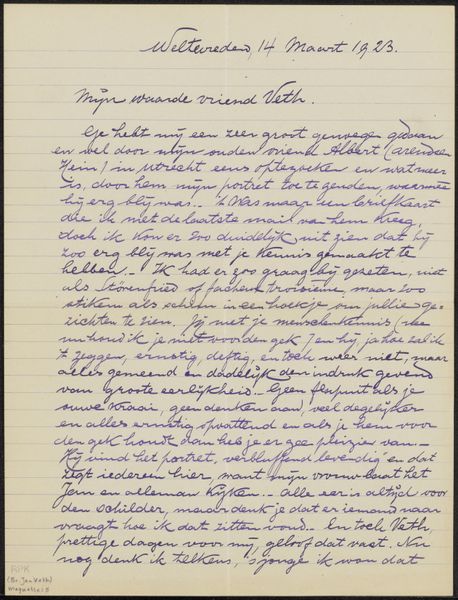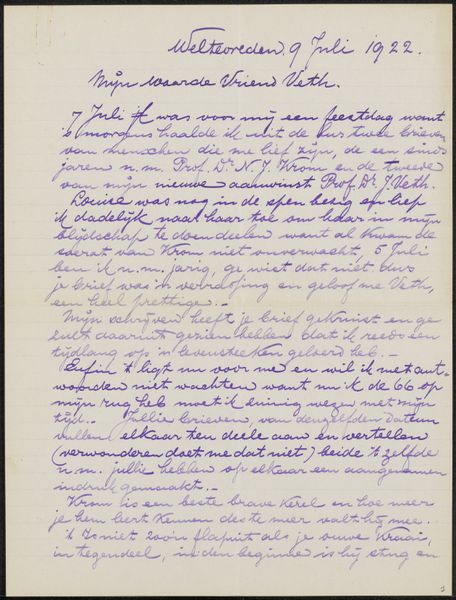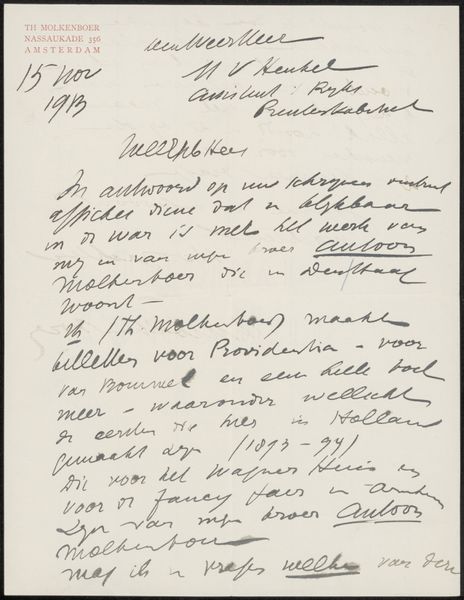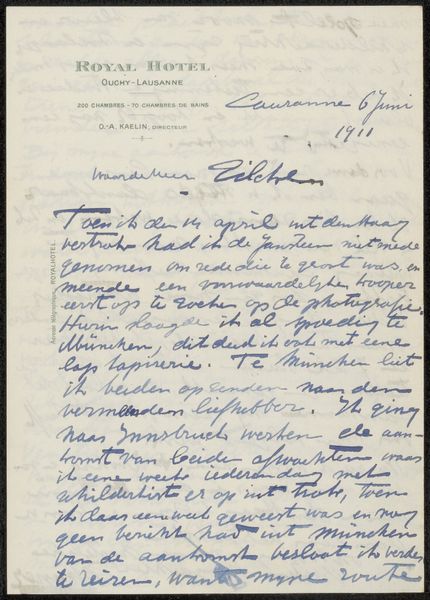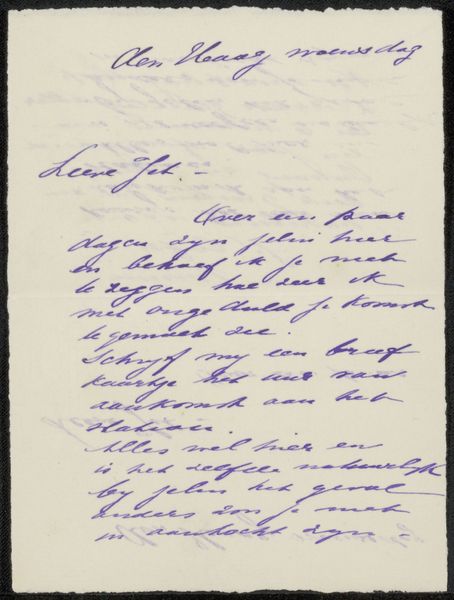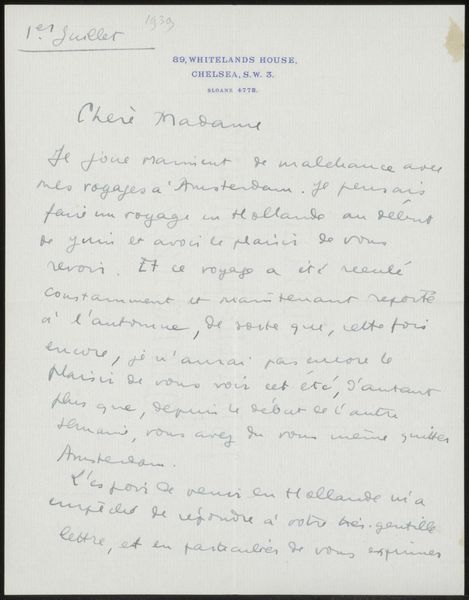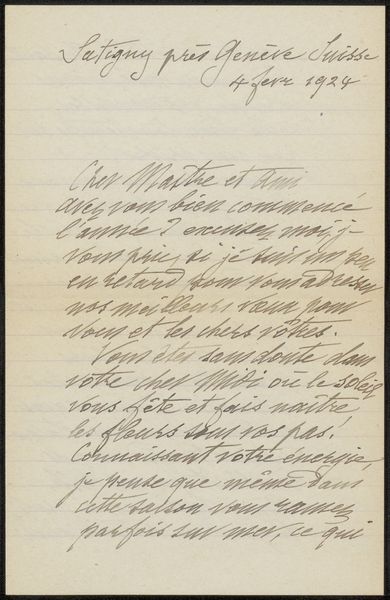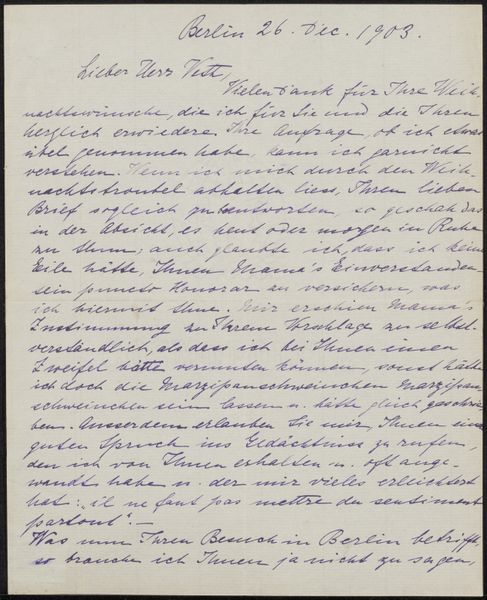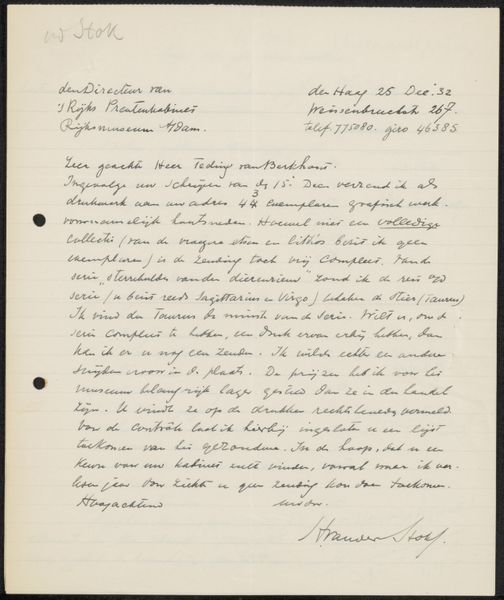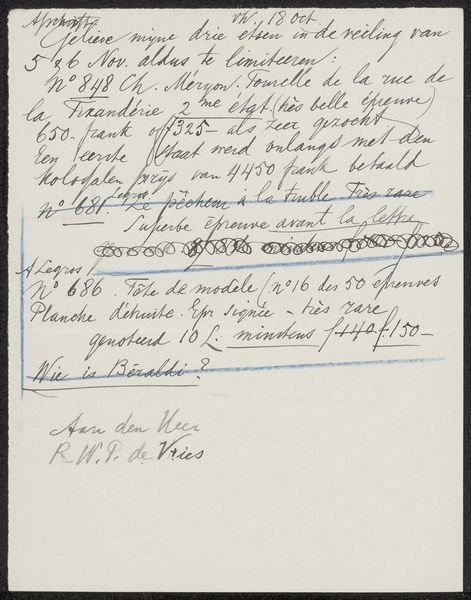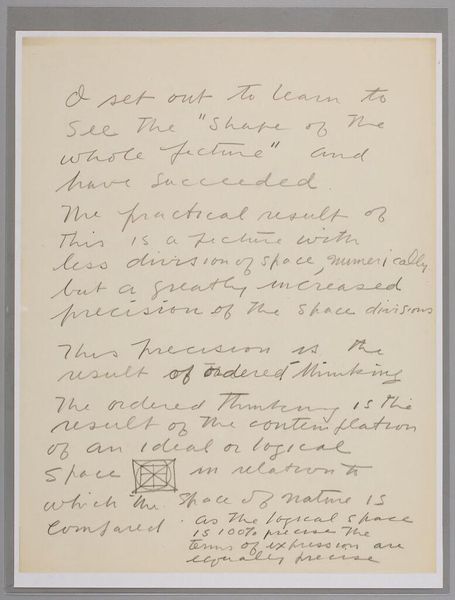
drawing, mixed-media, paper, pen, architecture
#
drawing
#
mixed-media
#
paper
#
sketchbook drawing
#
pen
#
architecture
Copyright: Rijks Museum: Open Domain
Curator: Let's turn our attention to this piece, “Copy Letter to E.A.M.C. van Ogtrop-Barones van Voorst tot Voorst,” thought to have been created around 1979 by an anonymous hand. It combines drawing and mixed media on paper, presenting what appears to be a carefully penned letter. Editor: My immediate sense is of something intensely personal, almost clandestine. The handwriting feels intimate, while the drawing elements suggest a mind that’s not confined to the purely textual. Curator: Precisely! The very materiality speaks of a layered communication. Look at the pen strokes: they vary in pressure and weight, indicating a thoughtful yet spontaneous execution. The architecture in it could indicate thoughts of grandeur and history that the recipient would be connected to. Editor: And the "sketchbook drawing" quality...it lacks a certain performativity. It is very matter of fact as to whom the message is going to. I mean a Barones wouldn’t need much pageantry for correspondence. What might have been the social dynamic at play here? The visual aspect, intertwined with the formal address, raises questions about status and the nuances of polite society in that time. Curator: I would add that the form itself communicates power. By creating what might seem like a casual copy on paper instead of a typed and officially stamped message implies an intimate exchange. In many ways the use of architecture might actually point out to a lack of attention because maybe the sender felt comfortable making the letter casual. Editor: The mixed-media aspect is really striking. This suggests it's more than a simple piece of correspondence; it’s a fusion of artistic impulse and societal norms. This makes you realize this piece documents not just a communication, but potentially reflects deeper social dynamics or the artist's subversive commentary on social stratification. Curator: What's fascinating to me is how this work, ostensibly a 'copy,' becomes an original piece in its own right through the mark-making. In examining the composition, we find a compelling interplay between text and artistic expression which in its current location as an exhibit makes people stop and wonder why its kept safe. Editor: Absolutely. By dissecting the layers—both physical and socio-political—of this ‘Copy Letter’ that an unknown created, we glean insight into the dialogue of artistry, correspondence, and perhaps a gentle societal critique frozen in ink and paper.
Comments
No comments
Be the first to comment and join the conversation on the ultimate creative platform.
